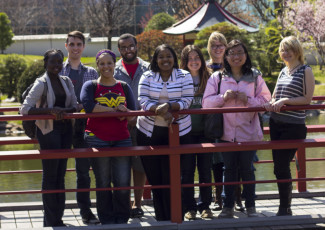Colleges are ‘Bright Spots’ in Aiding Hispanics
By AACC Staff
September 21, 2015
Educational attainment among Hispanics has been increasing. Here are some of the programs that have helped to make it possible.
The following is an excerpt from the Community College Daily.
Community colleges throughout the nation are taking steps to ensure Hispanics gain access to and succeed in higher education – through outreach, mentoring, early college programs and other initiatives.
Many of these efforts are highlighted in the new report “Bright Spots in Hispanic Education National Online Catalog” from the White House Initiative on Educational Excellence for Hispanics.
Hispanics comprise nearly one-quarter of the students in U.S. public schools, and in the next few decades, they will represent nearly one in three American workers. As a result, the White House states, “The future of our nation is closely connected to the future of our Hispanic communities.”
Educational attainment among Hispanics has been increasing, and the White House Initiative believes publicizing the programs that are contributing to that success will lead to further progress.
In the right direction
In 1990, 58 percent of Hispanics had earned a high school diploma and only 8 percent had earned a bachelor’s degree. By 2013, nearly 76 percent of Hispanics earned a diploma and nearly 16 percent attained a bachelor’s or higher degree.
The Bright Spots online catalog features more than 230 programs, models, organizations and initiatives that support educational attainment of Hispanics “from cradle to career,” including efforts at the pre-K, K-12, community college and university levels.
In Wisconsin, for example, Brian Albrecht, president of Gateway Technical College and a member of the American Association of Community Colleges board of directors, saw a need to address the growing Hispanic community. He created a new position, Hispanic community liaison, to work with the Delavan-Darien School District to develop an English-as-a-second-language instruction program for public school parents.
“Once they complete the English language courses, the hope is they will transfer to our degree programs,” said Zina Haywood, Gateway’s provost and executive vice president.
The parents also will be better able to participate in their children’s education and will be more likely to send their children to college.
Successful programs highlighted
Here are some of the other community college “bright spots” contributing to increased educational attainment of Hispanics:
- The Latino Outreach initiative at Bluegrass Community and Technical College in Kentucky encourages Latino students to access and complete college by directing and facilitating creative, interactive programs to increase awareness of college opportunities, cultivate student leadership and self-awareness, and build community and peer-to-peer mentoring.
- South Texas College’s Early College High School program gives students an opportunity to earn 60 credits toward an associate degree. The program regularly reviews student performance metrics to gauge the impact and effectiveness of services.
- In Florida, the Louis Stokes Alliance for Minority Participation works in partnership with the STEM Alliance of Central Florida to increase the number of underrepresented minority students who complete associate degrees and enroll in science, technology, engineering or mathematics in four-year institutions. In the past two years, enrollment of minority students has significantly increased at Lake-Sumter, Seminole and Valencia community colleges.
- Queensborough Community College (QCC), a Hispanic-serving institution in New York City, introduced the concept of freshman academies in 2009 to enhance the first-year experience for students entering college. The following year, QCC, with the help of IBM, created an analytics dashboard, known as Early Alert, that enables professors to identify risk indicators so they can provide extra help to struggling students before it is too late.
To continue reading, visit the Community College Daily.







